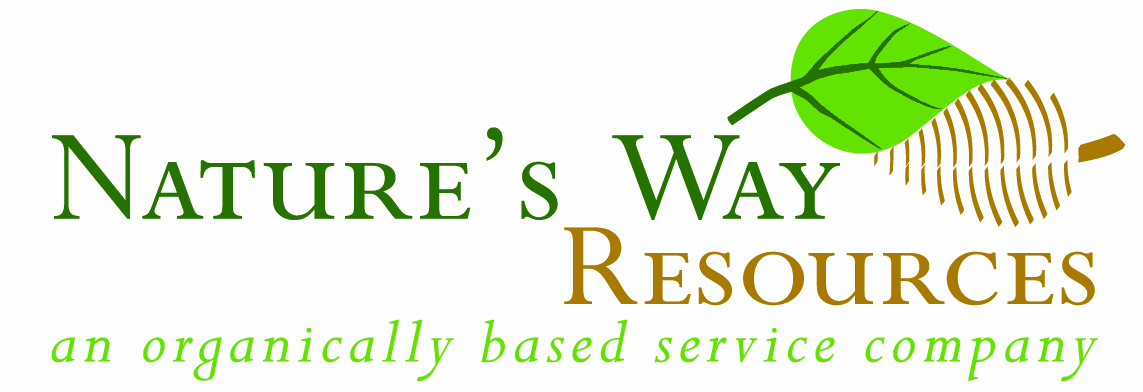
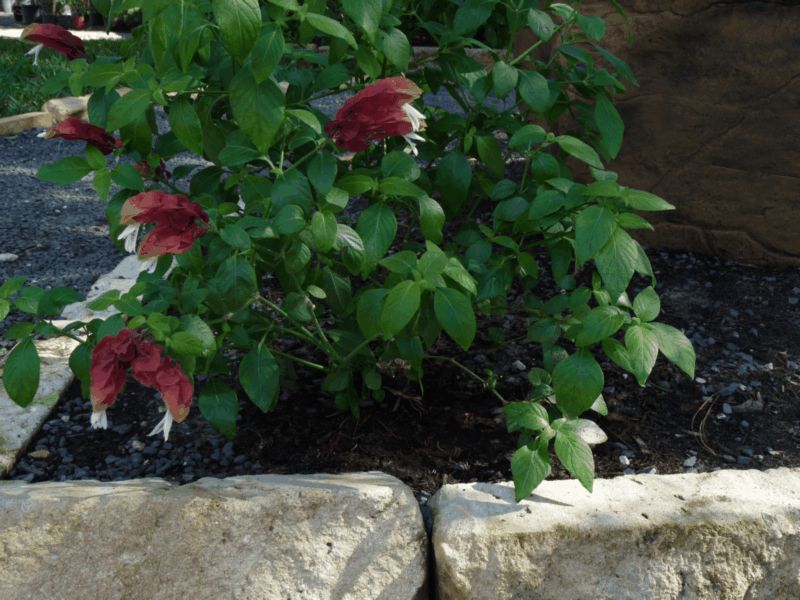
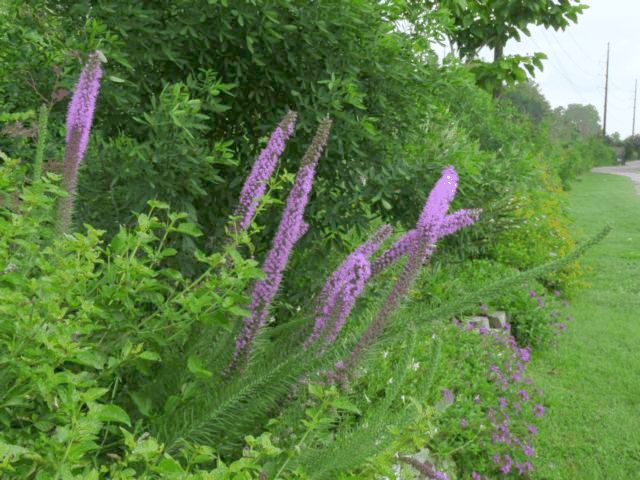
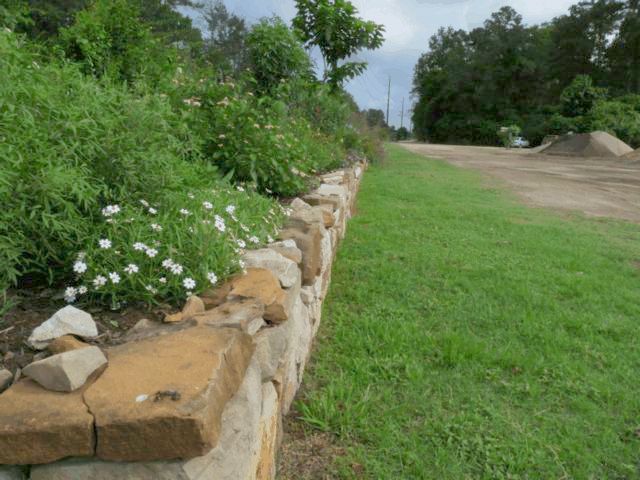
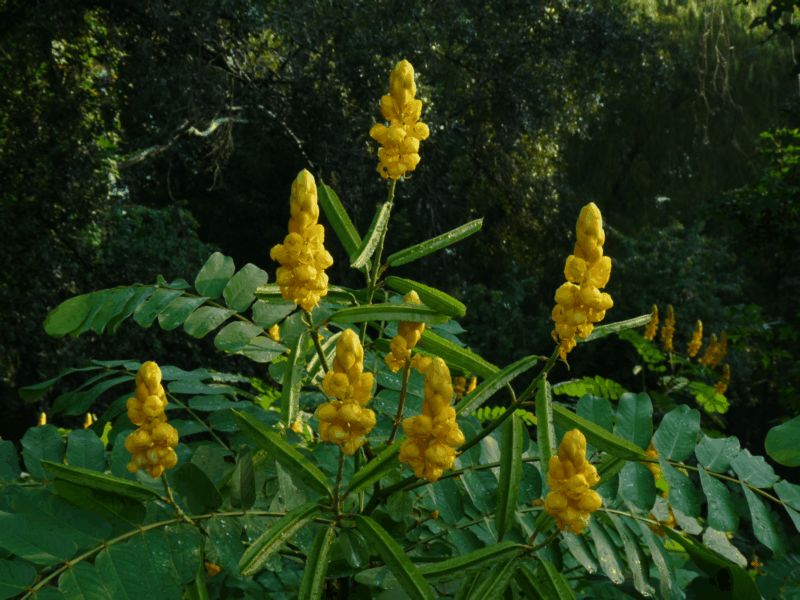
BROWN PATCH and TAKE-ALL PATCH - Warning Signs
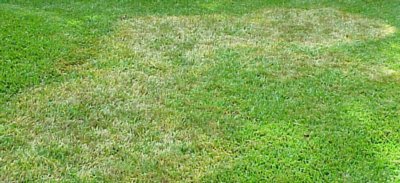
BROWN PATCH: Symptoms include yellowish grass with a grayish ring of wilted grass at the edges of the patch, several inches to many feet across. Grass blades will easily pull off of stolons in the grayish area. The disease damages roots, stolons, and nodes. The disease tends to start in the Spring and become bad in the Fall. Brown Patch, survives best in turfgrass with excessive thatch (healthy soils do not have thatch). It also occurs most frequently at daytime temperatures of 75-85EF with cooler nighttime temperatures (sometimes in the Spring but most common in the Fall). However, we are now seeing Brown Patch starting even during the hot summers.
The cheap fertilizers (ammonium nitrate being the worst) tend to be strong acidifiers, which create conditions that favor diseases like Brown Patch. Due to the high acidity that develops from the use of these artificial fertilizers, farmers and gardeners often add ag-lime (crushed/powdered limestone of primarily calcite not dolomite). Note: In WW-II, the army made run-ways over night by tilling in ammonium nitrate and limestone and adding a little water. It would set up almost like concrete in 24-48 hours. People today use the same ingredients and then wonder why they have hardpan and compaction problems.
TAKE-ALL PATCH - This disease is generally found in St. Augustine and Bermuda lawns. However, it will attack Bentgrass, Zoysia, Fescue, Perennial Rye and a few others. Symptoms include yellowing and discolored leaves in the early stages to brown dead areas as the disease progresses. Infected areas are generally rounded from several inches to many feet across but may be irregular in shape. Often the disease is misdiagnosed as iron deficiency or as chinch bug damage in Summer and treating for these problems actually causes the disease to spread faster.
The disease damages roots, stolons, and nodes. Hence the roots are short, often blackish and look rotted. Often a gentle pull will dislodge runners from the soil due to the rotted roots. This disease is slow to get started and grass may be infected up to two years before symptoms show. Take-All Patch often starts in Spring and survives best in turf with excessive thatch (healthy soils do not have thatch). Take-All Patch develops and grows best in cool wet weather; however the symptoms often show up much later in hot dry weather. Take-All Patch will grow better or even prefers alkaline conditions while Brown Patch prefers or grows better in acidic conditions.
Frequent shallow watering causes the most problems. Much of our area water comes from wells that tend to be alkaline (lots of dissolved carbonates of calcium and magnesium), hence watering tends to create the alkaline conditions the disease favors. When we water the dissolved carbonates (limestone) will precipitate out of the water and cement the soil particles creating hardpan and raise the pH causing alkaline conditions.
Sources of Infection
Often new sod from grass farms is purchased and it is infected with the diseases Brown Patch and Take-All Patch. The sod farm uses large amounts of fungicides and other toxic chemicals which keep the disease dormant or suppressed so one does not see any visible signs When these extensive chemical treatments are removed, the disease wakes up and starts to slowly grow, visibly showing up months or even years later.
Both Brown Patch and Take-All Patch are spread by landscape and lawn maintenance companies as they move their lawn mowers from yard to yard spreading the diseases. Very few companies take precautions to clean and sanitize their equipment between each job site.
A third source of infection is from grass cuttings, trimmings from edging or soil particles that are blown into your yard by mechanical blowers from infected areas.
Warning Signs
The questions we might ask ourselves are what causes unhealthy soils, are there any symptoms or warning signs and how do we prevent (or cure) unhealthy soils?
Researchers have observed several things about Brown Patch and Take All Patch:
- both thrive in soils that tend to be wet (over watered)
- both prefer soils that are compacted
- both require low levels of oxygen in the soils
- both grow best in soils of low fertility or where the fertility is out of balance (e.g. excess nitrogen)
- both prefer cooler soil temperatures
We can now ask ourselves are there any warning signs that indicate we might have a potential brown or Take-All Patch problem forming? Most soil diseases are sort of like cancer in humans: they can be growing and developing long before visible symptoms appear.
There is a group of plants that have evolved to live in the exact same conditions that favor Brown Patch and Take-All Patch. We call them weeds. Disease organisms and plant species we call weeds are nature's way of fixing problems and getting rid of weak unhealthy plants (Survival of The Fittest) hence, researchers are now viewing weeds as a diagnostic tool rather than as a pest.
A common weed in our area that thrives in the conditions that favor Brown Patch and Take-All Patch is nutsedge or nut grass (Cyperus esculentus and Cyperus rotundus) which are members of the sedge family. Most sedges have evolved to grow in bogs and swamps and to even standing water. Swamps and bogs are areas of low fertility, little oxygen in the soil, and very wet conditions. These type soils are dominated by bacteria with very little fungi. However, healthy turfgrass, depending on the species, requires 30-50% beneficial fungi species in the soil. If we lose the good fungi then the stage is set for pathogens (bad fungi) to move in and take over.
If we see nut grass in our lawns or gardens, it is telling us that the condition of our soil is at least starting to favor nut grass NOT lawn grass. In other words our soils in our turf grass have become compacted: there is little air (oxygen), the fertility is low or out of balance, and the soil is too moist. When these conditions occur, the good soil microbes that prevent turf diseases are dying off and the bad ones like Brown Patch are waking up and starting to grow and multiply. Using the human cancer analogy, if we detect an early skin cancer it can easily be removed and prevented from spreading and becoming serious. Similarly, at this stage it is relatively easy and inexpensive to stop Brown Patch and Take-All Patch and turn things around.
Working backwards, we can ask ourselves; what did we do to cause these conditions? The first major culprit is water soluble synthetic fertilizers with "weed and feeds" being the worst. A close second are the inexpensive (as in low quality) synthetic (artificial) fertilizers that often release their nutrients quickly from the salts they are made from (these also may contain hazardous waste that create other long term problems).
When we use these types of fertilizers several things start to happen in our soil:
- The excess nitrogen causes fast but very weak unhealthy growth.
- The salts kill the good microbes (remember we use salt in pickling to keep things from rotting because it kills microbes).
- The salts move down into the soil and form glues that cement the soil particles together creating hardpan.
- Healthy fertile soils have about 30 carbon atoms to every nitrogen atom, hence the excess nitrogen creates an explosion of bacteria in the soils to absorb the nitrogen. To grow quickly, the bacteria use carbon from the humus or soil organic matter destroying it in the process; hence the soil quickly becomes compacted.
- The bacteria also breathe air (oxygen), hence the soil becomes anaerobic as the air is used up far faster than it is replaced. Bad microbes do not like oxygen, hence the pathogens wake up and start growing (e.g. Brown Patch, take-all, dollar spot, etc.).
- The salts also kill good microbes directly by sucking all the water out of their bodies.
Over watering is the next problem. Since the soil structure has been damaged and the organic matter destroyed, we now have conditions where the soil cannot drain; hence the pores are filled with water, making the lack of aeration worse (the soil cannot breathe). Without oxygen, roots start to die (grow only very shallow) and decay. The decay is caused by anaerobic microbes (fermenters) since there is no oxygen, hence alcohol is produced. Only 1 ppm of alcohol will kill the roots of most plants further stressing and weakening the grass. Additionally, the chlorine (or chloramine which are even worse) in the water increases the problems as it kills the remaining beneficial microbes and combines with sodium in the soil and/or cheap fertilizer to form more salt, resulting in more compaction and hardpan. Recent research has found that chloramine cause lead and other heavy metals to leach from old pipes into the water. Besides being toxic to humans, these heavy metals can cause the soil to become out of balance nutritionally making the disease problems worse.
Third, because of the above problems our earthworms have died off. Earthworms aerate the soil, they create soil structure to allow water and air to circulate, they eat weed seeds, and they kill human pathogens from e-coli to cholera and salmonella. Earthworms also kill soil pathogens preventing them from becoming established and they produce plant root growth hormones.
Additionally, earthworms also stimulate the growth of good microbes that fight disease and help create good soil structure.
Correction
The first step is the same as in medicine: "Do No Harm!" This means do not apply more low quality synthetic fertilizer and stop or severely limit all forms of irrigation or watering. Refrain from using synthetic chemical pesticides, fungicides, and herbicides. These toxic and dangerous chemicals help create conditions that favor the disease organisms.
The second step is to stop the development of the pathogen (e.g. Brown Patch and Take-All Patch fungi). A few years ago the USDA discovered that corn meal was very effective in stopping the growth of pathogenic fungi. Agricultural cornmeal works the best but even cornmeal from the grocery store can help (of the 15 brands of cornmeal from grocery stores that were tested by the USDA, Aunt Jemima stone-ground worked best). Corn meal applied at the rate of 2 pounds per 100 square feet every few weeks was found to be more effective than any chemical fungicide available, and it is safe for children and pets. Other products that have been shown to suppress the fungal diseases are garlic oil products (Garlic GP), fungal based compost teas, and microbial inoculants (Biofungicides).
The third step is to get air into the soil, hence physical aeration is the quickest method. This can be done by renting an aerator from a local equipment rental store. The types that remove plugs of soil work best.
The fourth step is to protect the grass roots from the disease and prevent it from becoming reestablished. This can be done by using microbial inoculants or good compost.
Microbial inoculants are products like Actinovate that are now available at better garden centers. The bacteria in Actinovate (streptomyces sp.) will colonize grass roots and they will attack and kill the fungus (rhizoctonia solani) that causes Brown Patch and Take-All Patch. They also kill many other soil pathogens like Dollar Spot.
Good, well-aged compost has been found by many researchers to be the single best method of stopping soil diseases (e.g. rhizoctonia solani and gaeumannomyces graminis var. graminis) and correcting soil problems. Compost is high in humus compounds, full of beneficial microbes that prevent disease and create soil structure, is a natural nutrient source for all plants, and also provides many other benefits.
NOTE: Microbial Inoculants and amendments versus Compost: The very best inoculant products on the market have only 200 species of bacteria and 20 species of fungi (most inoculants have far less). For example, a 25 pound bag of microbial inoculants is $40 per bag or more. Even a small bag of streptomyces sp. will retail for about $20.00. One cubic yard (cy) of good two year old compost will have over 25,000 species of bacteria, 10,000 species of fungi, many species of protozoa and beneficial nematodes to cycle nutrients and prevent disease, hundreds of pounds of humus (good humate is $30.00 per 50 pound bag), and worm castings (vermi-compost) by the bag cost over $800.00/cy. Hence compost at $40.00/cy in bulk or even $10.00/bag is the most cost effective tool a gardener can use to prevent and cure disease, improve and correct soil problems.
Compost also provides salt removal benefits as the microbes in compost reduce the negative effects of soils with high sodium (salt), reducing compaction and hardpan. The bacteria in compost use sodium (Na) in their cell walls and remove it from the soil profile as an active chemical. Similarly the fungi in compost use the chlorine (Cl) ion in its cell walls, removing it from the soil profile as an active chemical. The combined effect removes the cementing of soil particles caused by salts eliminating hardpan over time and recreating good soil structure. Plants growing in soils amended with good compost also use far less water (50-80% reduction) resulting in more savings.
The good fungus in compost will also dissolve calcium and magnesium salts that contribute to hardpan and make the minerals available for use by plants and help create good soil structure in the process.
- Disease suppression (competition, inhibit, consume plant pathogens)
- Improve nutrient retention in soil
- Mineralize nutrients and make them available to plants
- Improve soil structure (more water and oxygen)
- Decompose toxic materials (phenols, tannins, pesticides)
- Help tie-up and immobilize heavy metals
- Produce plant growth promoting compounds
- Improve crop quality (flavor, nutrients, and yield)
Once we have identified that we have a problem forming, we can take steps to minimize and correct it.
Prevention
Prevention is similar to correction. Do not use products that harm the soil! This means do not use synthetic fertilizers, toxic chemicals or cheap, inferior soil amendments. As the old adage applies "You get what you pay for". Also we have many good organic fertilizers available in Houston that help build the soil and correct problems. Three very good brands are MicrolifeTM (made for Houston soils and contains over 77 species of beneficial microbes), GardenVille from San Antonio and Lady Bug brand from Austin. Synthetic chemicals (fertilizers, fungicides, herbicides, pesticides, etc.) kill off many microbe species directly and kill others by destroying soil structure creating soil compaction and anaerobic conditions (without oxygen). Hence, it is best to avoid them and look for natural alternatives.
1) Always use a good organic fertilizer. Studies from Texas A&M, Ohio State University, USDA, etc. have found that organic fertilizers work best and give the best price/performance and without polluting the environment!
2) Always apply a ¼-½" layer of good compost at least once a year.
3) Only water when grass blades have begun to wilt. If the first two items are followed regularly, in a few years as soil health and fertility improves, water requirements of the grass will drop 50-80% and almost eliminate the need for supplemental irrigation! If watering becomes necessary, it is beneficial to pass the water through a chlorine removal system first. Many of the better nurseries sell them and they are inexpensive and extremely easy to install.
4) Only use products that stimulate good microbes in the soil. A few good ones are: Medina Soil Activator or Medina Hasta Gro Plus, seaweed and fish extracts like Super Seaweed and Ocean Harvest, humates, agricultural molasses or dry molasses, compost tea, etc. Bio-fungicides like Actinovate, Micro-Gro, etc. work well if the organic matter in the soil is high and even better if compost is present.
Products from the ocean (fish emulsion, seaweed, greensand, etc.) provide trace minerals. Trace minerals for plants are like vitamins for humans, one does not need a lot but if you are missing one you can easily get sick. For plants, a trace mineral shortage shows up as an increase in disease and insect problems. All the soils in our area tend to be deficient in trace minerals.
When it comes to disease prevention, the old gardening proverb holds true over and over:
Feed the soil and it will feed your plants!
To learn more about the newest research and advances in soil and plant science there is an excellent new book for homeowners just released:
Book Review
Teaming with Microbes, A Gardener's Guide to the Soil Food Web, by Jeff Lowenfels & Wayne Lewis, Timber Press, 2006, ISBN-13:978-0-88192-777-1
This is currently the most complete book on the market about biological or organic methods in horticulture. It is written in a very easy-to-understand, non-technical format with lots of pictures illustrating the latest research in soil science. It is written for the average gardener and landscaper as an introduction that explains why organic methods work so well and how they help a person save time and money.
The book is written in two parts. The first part is an easy to understand very basic presentation on the science of soil biology. The second part takes the ideas and concepts on the Soil Food Web that were introduced in part one and applies them to solving problems in our yards and gardens. Subjects covered range from taking care of our soil to compost and mulch choices. Also included is information on compost teas to natural weed control. Each plant group from lawns and turfgrass, to annuals and vegetables, to shrubs perennials and trees are covered.
This book is Highly Recommended for all gardeners, landscapers or anyone taking care of a lawn or garden.